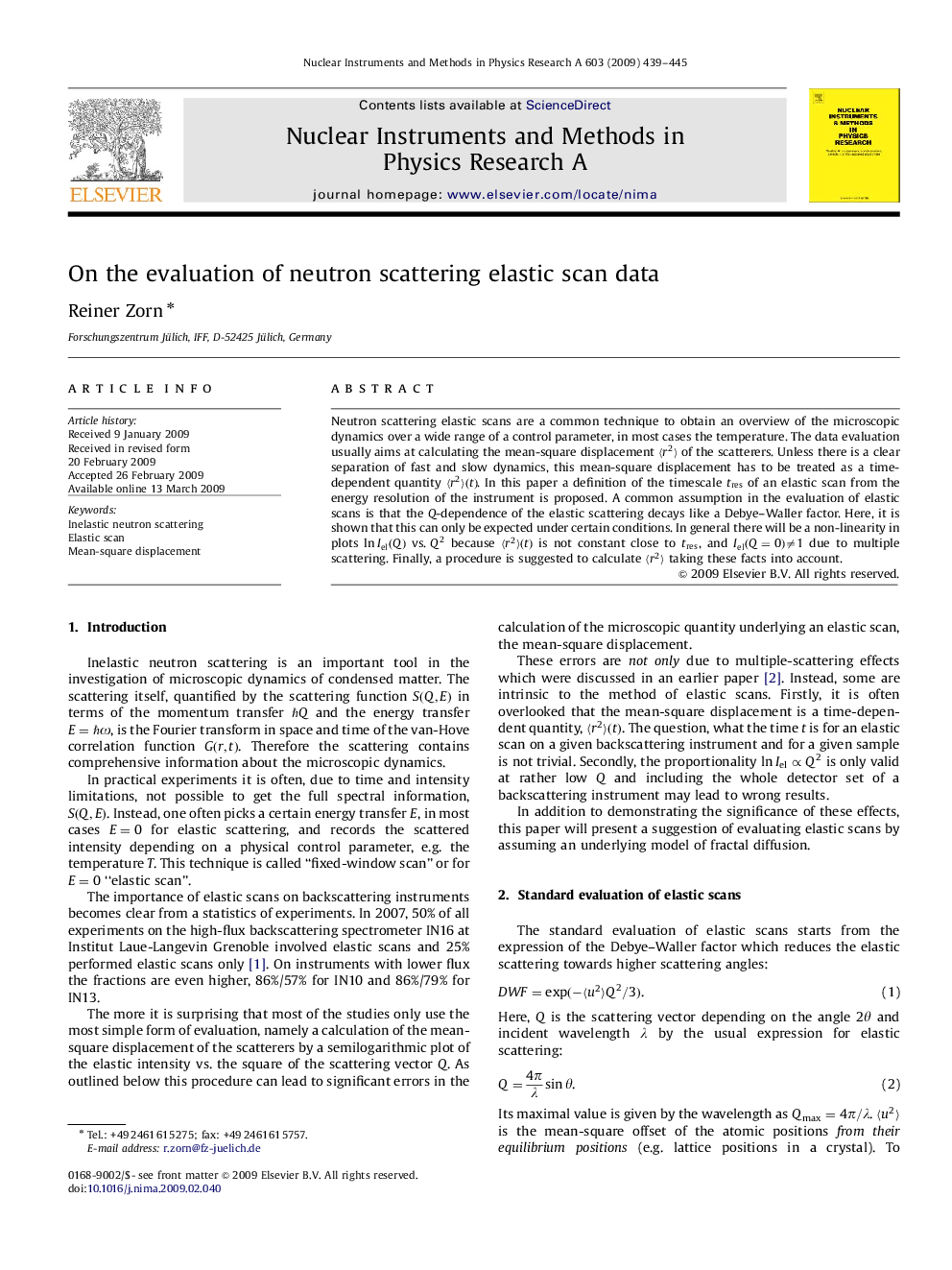| Article ID | Journal | Published Year | Pages | File Type |
|---|---|---|---|---|
| 1828760 | Nuclear Instruments and Methods in Physics Research Section A: Accelerators, Spectrometers, Detectors and Associated Equipment | 2009 | 7 Pages |
Neutron scattering elastic scans are a common technique to obtain an overview of the microscopic dynamics over a wide range of a control parameter, in most cases the temperature. The data evaluation usually aims at calculating the mean-square displacement 〈r2〉〈r2〉 of the scatterers. Unless there is a clear separation of fast and slow dynamics, this mean-square displacement has to be treated as a time-dependent quantity 〈r2〉(t)〈r2〉(t). In this paper a definition of the timescale trestres of an elastic scan from the energy resolution of the instrument is proposed. A common assumption in the evaluation of elastic scans is that the Q -dependence of the elastic scattering decays like a Debye–Waller factor. Here, it is shown that this can only be expected under certain conditions. In general there will be a non-linearity in plots lnIel(Q)lnIel(Q) vs. Q2Q2 because 〈r2〉(t)〈r2〉(t) is not constant close to trestres, and Iel(Q=0)≠1Iel(Q=0)≠1 due to multiple scattering. Finally, a procedure is suggested to calculate 〈r2〉〈r2〉 taking these facts into account.
